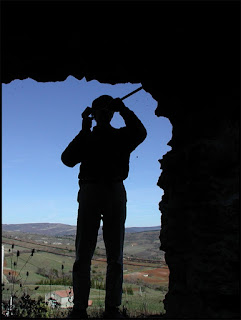Afternoon Tea - a matter of taste
Afternoon Tea - A matter of Taste
Sophie Duncan 2020
In the deep countryside, 40 minutes South of Carcassonne, we found that it is not commonplace to share a meal in the home of a friend or acquaintance. People tend to eat together for special parties and gatherings at the village hall (salle de fêtes) or outdoors, gathered in a beautiful spot to celebrate together an anniversary or charitable event. There is little traditional dinner party ethos. Even families and childhood friends will more probably support their favourite local restaurant for special occasions. Perhaps it is considered a rather Northern way to behave in the South, that likes to demarcate itself from bourgeois Parisians.
Invitations to afternoon tea at Chateau St Ferriol were the perfect way to disarm the natural timidity of our neighbours and invite them around without seeming overwhelmingly friendly. Tea also happens to be one of the very few British culinary achievements (along with the English breakfast) that has gained any favourable reputation with the French. An invitation for tea irresistibly piqued my village friend’s curiosity and she brought along her whole family. Tea is fantastic as you can discreetly eat as little or as much as you feel like. If people want to talk more and eat less or vice versa it is painless. It’s a help yourself affair.
The French expect British people to be eccentric and our tea rituals do not disappoint them. In France the word used for tea is the verb Gouter, ‘to taste’. The Pause gouter is an institution with clearly defined rules, justified with exemplary rationality. It has to be. Strictly speaking eating between meals is frowned upon by the French, to the extent that food adverts carry a health warning not to snack between meals. It is OK for children, the elderly and the unwell! But no healthy adult should snack between meals. The 4 o’clock gouter may be fondly referred to as if it is a treat but it is above all a scientifically proven nutritional necessity for the growing young. One of the shibboleths that define being French. A glass of fruit juice and a little something sweet. All proper French mothers know exactly when a gouter is supposed to be and what it is to consist of. It has lost its origin as a decadent past time of the bourgeoisie.
A far cry from the British afternoon tea. Even a gouter gourmand does not touch the decadence of a British afternoon tea. In the UK afternoon tea is a flagreant excuse for healthy adults to indulge. Afternoon tea is made up of a medley of dainty bite-sized sweet and savoury delicacies. The more rich and indigestible the better. Like a café gourmande but with tea and savouries too. Ham and mustard and cucumber, butter and marmite sandwiches and scones topped with lashings of clotted cream and a little jam are my personal favourites.
Until the late 19th century when commoners also started going on holiday, afternoon tea was the preserve of the idle rich. When tea first came to Europe in the 17th century, it was as posh as the porcelain required to drink it from. But in the heyday of Victorian England, when the hordes became comfortable and started taking holidays around the country by train, afternoon tea became a popular occasion and the whole nation began enjoying what had previously been a social ritual for the upper classes who tended to have their dinner late and so needed an afternoon snack.
It is significant that afternoon tea remained exclusive to holidays for the masses, who needed to have their dinner early and get to bed.
With typical Anglo-Saxon mayhem, there are no strict rules for afternoon tea. To cut off the crust or not to cut off the crust? Jam on top of cream or cream on top of jam? The battle for individuality tears its way onto the tea spread. This peculiar freedom will fascinate your French friends. If in France there is a correct way to do everything, it is never so with the quirky Brits.
Early on in our friendship I watched my neighbour’s face as I passed her my favourite sandwich. A crustless white bread square with butter, cucumber and marmite. She tasted it apprehensively and then a light when on. ‘Ahh! it's good with the butter’. Yes! Cucumber, Marmite and butter… with white bread. It's sublime. Cuisine we can be proud of.
She is now a life-time fan of Marmite and a Britophile, but cannot understand how there is not a rule about crusts.
Pen for Hire
sophieduncanmcdonald@gmail.com


Comments